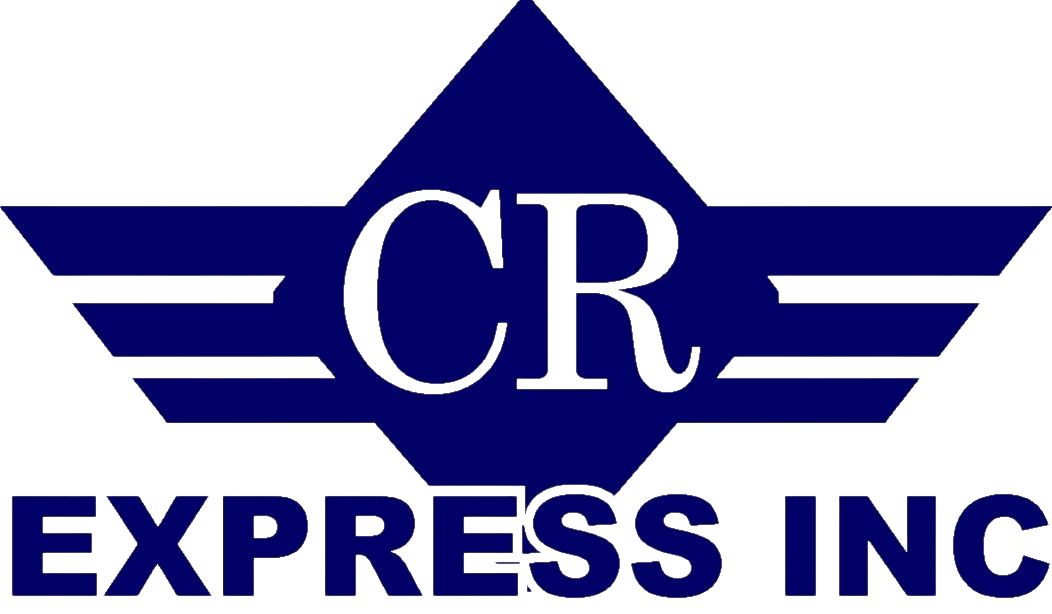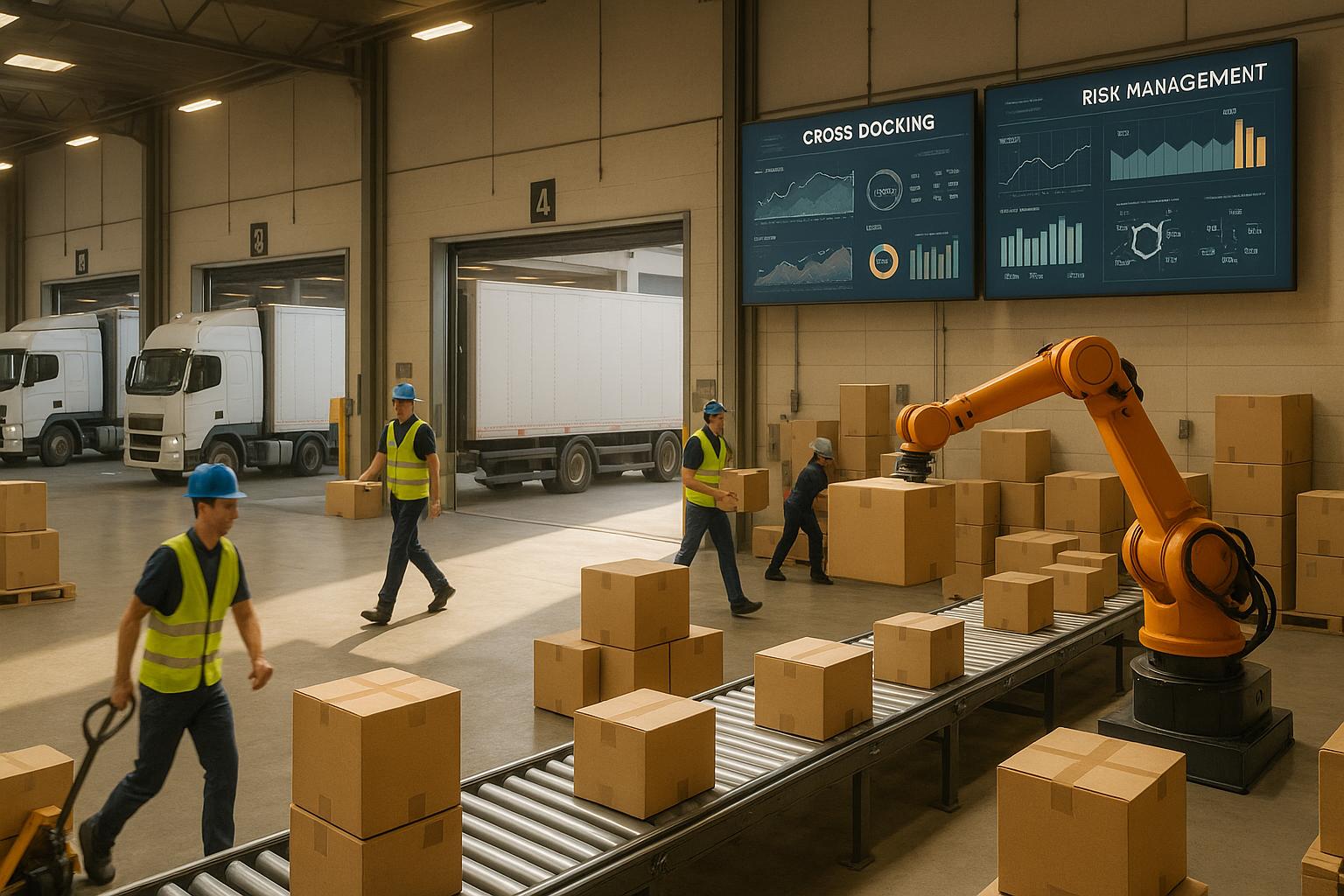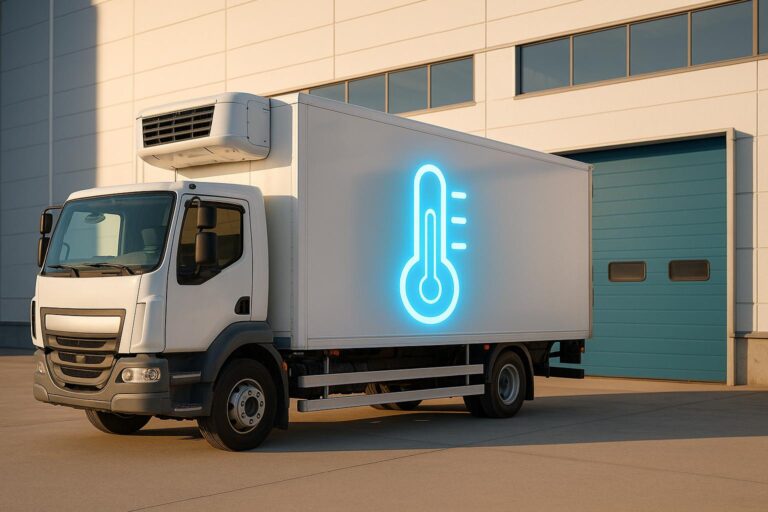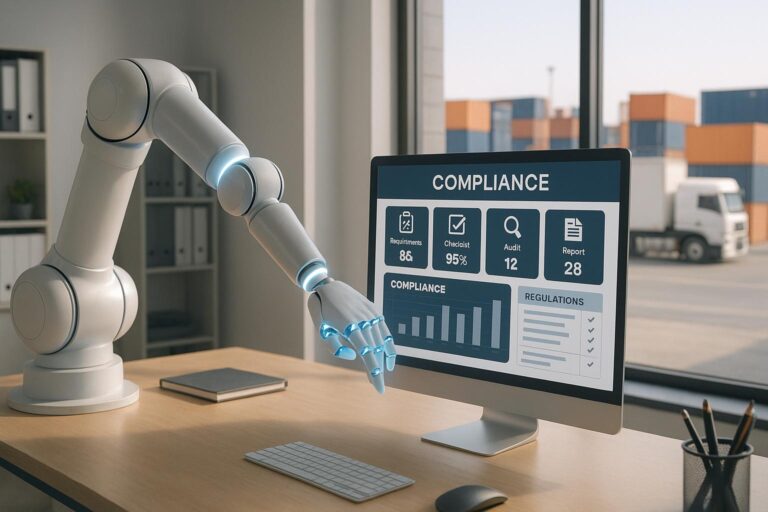AI is transforming cross-docking by tackling risks, reducing errors, and improving efficiency. Through predictive analytics, real-time monitoring, and AI-driven security, logistics operations are now faster and more reliable. Here’s a quick breakdown:
- Predictive Analytics: AI forecasts demand, minimizes shipment errors, and reduces truck wait times by up to 20%.
- Real-Time Monitoring: Sensors and IoT devices enable dynamic dock scheduling, cutting delays and improving throughput.
- Security Systems: AI ensures compliance with regulations and protects sensitive cargo like hazardous or high-value goods.
Though initial investments in AI tools and training are high, most facilities see a return on investment within 12–18 months. For companies managing specialized shipments, AI offers both efficiency and peace of mind. The key is balancing automation with human oversight to ensure smooth operations.
CTS Unpacking Freight Series: AI-Powered Freight – Revolutionizing Transportation and Logistics
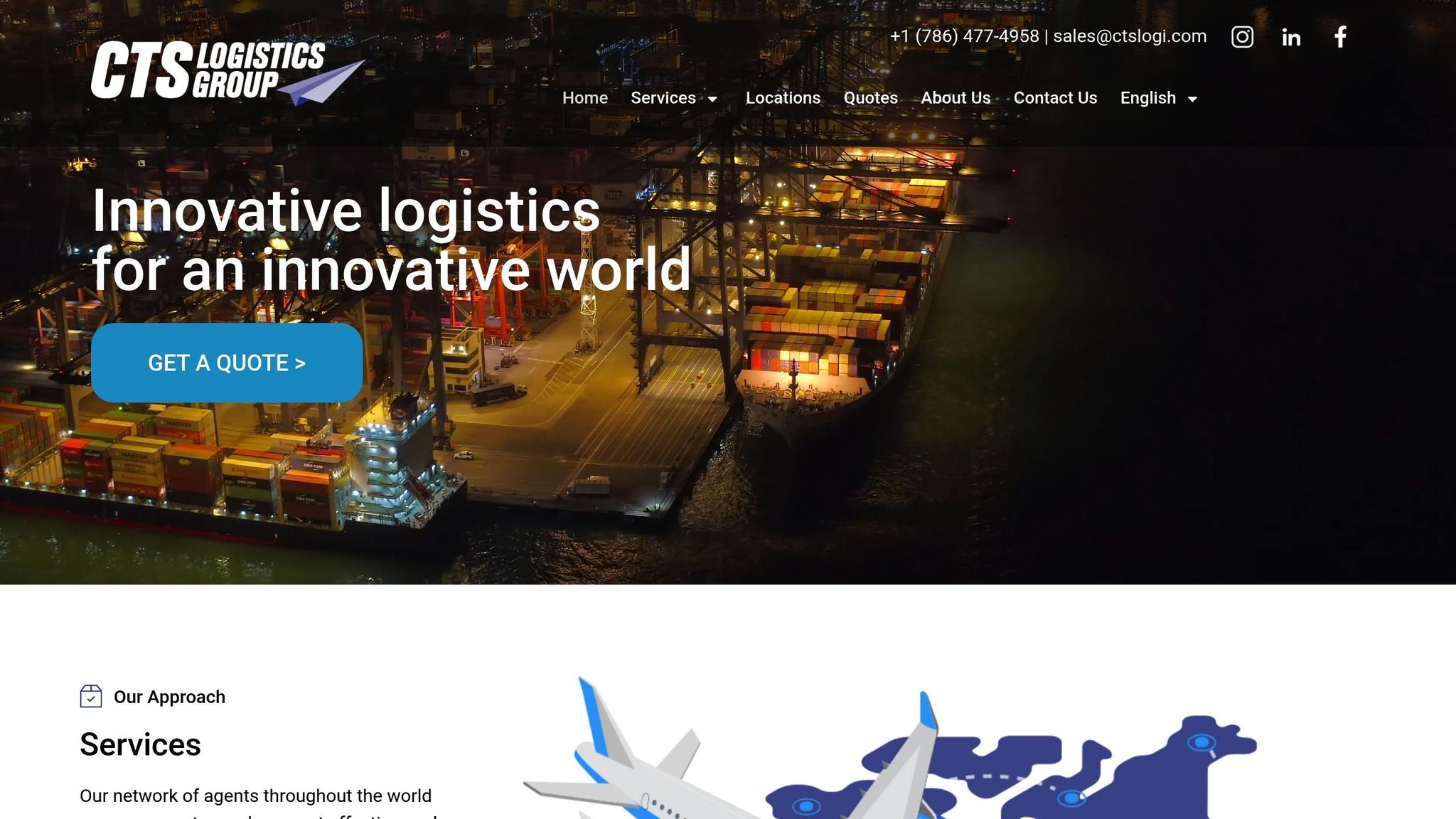
1. AI-Powered Predictive Analytics
AI-powered predictive analytics is changing how cross-docking operations handle challenges by using both historical and real-time data to foresee disruptions before they happen. By examining patterns in truck arrival times, dock availability, shipment volumes, and seasonal trends, these systems can anticipate bottlenecks and delays, keeping the supply chain running smoothly.
This technology brings together data from IoT devices, RFID systems, barcode scanners, and transportation networks, offering a comprehensive view of operations. With this unified perspective, managers can take action ahead of potential problems instead of just reacting to them after the fact. This shift to proactive decision-making lays a strong foundation for better risk management in cross-docking.
Risk Mitigation Effectiveness
Predictive analytics plays a key role in identifying and addressing risks in cross-docking. It can predict issues like truck congestion, overused docks, and inventory mismatches. These insights help tackle problems such as misrouted shipments and scheduling conflicts. By analyzing historical data, AI uncovers subtle patterns and relationships that might otherwise remain hidden.
AI-powered predictive analytics can reduce picking errors and misrouted shipments by up to 30%, according to industry case studies.
This technology proves especially useful for operations dealing with specialized cargo, such as hazardous materials, temperature-sensitive goods, or high-value items. Enhanced oversight ensures these shipments are handled efficiently and securely.
Operational Efficiency
The operational improvements driven by AI-based predictive analytics are both clear and measurable. For example, assigning dock doors through AI optimization can cut truck wait times by 15–20% while boosting throughput by 15%, directly improving efficiency and cutting labor costs.
Companies using AI for real-time inventory management report up to a 25% reduction in stockouts and overstocking incidents.
AI also enhances warehouse organization by recommending storage locations based on factors like item size, weight, and historical demand. This reduces the time workers spend searching for and moving items, while also minimizing the distance goods travel within the facility.
Scalability and Adaptability
AI systems not only mitigate risks but also scale effortlessly to meet fluctuating operational needs. Machine learning allows these systems to continuously refine their models as new data comes in. This adaptability ensures smooth operations during seasonal peaks, unexpected supply chain disruptions, or changes in carrier schedules – all without manual intervention.
During high-demand periods, such as the holiday season or unforeseen disruptions, AI can dynamically reassign dock spaces and reroute inventory in real time. This flexibility ensures efficiency even under volatile conditions, making it particularly valuable for logistics providers managing diverse and specialized shipments.
Cost Implications
Adopting AI-powered predictive analytics requires an upfront investment as well as ongoing costs. Initial expenses typically cover software licensing, integration with existing warehouse systems, IoT sensor installations, hardware upgrades, and staff training. Recurring costs include cloud computing, data storage, system maintenance, and updates.
However, the savings often outweigh these costs. Automation reduces labor expenses by cutting down on manual errors, better demand forecasting lowers storage costs by optimizing inventory levels, and predictive maintenance minimizes downtime. These savings collectively improve efficiency and reduce operational risks. While the exact return on investment depends on a facility’s size and complexity, most high-volume cross-docking operations in the U.S. report achieving ROI within 12 to 18 months, making this technology a smart move for businesses aiming to stay competitive.
2. Real-Time Monitoring and Smart Scheduling
Real-time monitoring and smart scheduling are the driving forces behind the efficiency of modern AI-powered cross-docking facilities. By incorporating tools like sensors, cameras, and IoT devices, these systems maintain constant oversight of vehicle movements, personnel activities, and shipment progress. This steady stream of data feeds into AI algorithms, which analyze patterns, pinpoint bottlenecks, and notify managers of potential disruptions. The result? Quick, informed decisions that keep operations running smoothly.
Technologies like computer vision, RFID, and cloud-based analytics further enhance this process by offering a detailed view of the entire operation. With this level of visibility, AI systems can dynamically assign dock doors, balance shipment loads, and coordinate inbound and outbound traffic based on real-time conditions – replacing outdated static schedules. This setup ensures that risks are detected early and adjustments can be made without delay.
Risk Mitigation Effectiveness
AI-powered monitoring systems are designed to spot and resolve issues before they escalate. Whether it’s a late truck, a mechanical failure at a dock door, or a misrouted shipment, these systems can quickly adjust schedules and routing plans to minimize disruptions. For instance, if a truck arrives behind schedule or a dock malfunctions, the AI recalculates assignments on the fly to maintain workflow continuity.
This capability is especially useful for handling specialized cargo. For shipments involving hazardous materials, temperature-sensitive goods, or high-value items, AI systems ensure compliance with strict handling protocols. If deviations occur, alerts are triggered immediately, safeguarding both the cargo and the operation.
One standout example is an AI-powered prescriptive analytics solution that optimizes dock assignments and load balancing by analyzing truck arrivals, load types, and dock availability.
Operational Efficiency
AI-driven smart scheduling delivers tangible improvements in cross-docking operations. By dynamically assigning dock doors and balancing workloads, these systems reduce truck waiting times, cut down on handling delays, and maximize resource utilization. This leads to faster throughput and lower labor costs.
The benefits are especially noticeable during busy periods or unexpected disruptions. AI systems can adapt instantly to changes in demand, shipment schedules, or facility constraints, eliminating the need for time-consuming manual coordination. For example, when multiple trucks arrive at once, the system evaluates factors like cargo type, destination, and dock availability to determine the most efficient processing order.
Scalability and Adaptability
AI monitoring systems are built to grow alongside operational demands. As shipment volumes increase, these systems handle the additional workload without requiring more manual oversight. They can also adjust to new routes, extra dock doors, or expanded capacity with ease.
This adaptability extends to diverse cargo types and changing business needs. For example, CR Express, known for its expertise in handling hazardous, high-value, and temperature-sensitive cargo, can leverage AI capabilities to further enhance its operations.
Machine learning takes this a step further by enabling these systems to improve over time. As more data is processed, the algorithms refine their predictions and scheduling capabilities, becoming more effective without the need for manual updates.
Cost Implications
Adopting AI-based monitoring and scheduling systems requires an upfront investment in technology – such as sensors, cameras, hardware, and software licenses – as well as costs for staff training and integration. However, the long-term savings often outweigh these initial expenses. Reduced labor needs, lower storage and handling costs, and minimized downtime from errors or delays all contribute to significant cost reductions. Many cross-docking operations report achieving a positive return on investment within 12 to 18 months of implementation. These savings, combined with improved resource efficiency, make AI a smart choice for modern logistics.
sbb-itb-c0b8770
3. AI-Based Security and Compliance Systems
AI systems are transforming dock operations by combining computer vision, machine learning, and real-time surveillance to monitor activity around the clock. These systems are designed to spot unauthorized access, theft, or tampering while also ensuring regulatory compliance. By automating documentation checks and adhering to TSA and customs standards, they create a streamlined process that reduces risks and improves security measures.
Risk Mitigation Effectiveness
AI-powered tools are especially effective at identifying and addressing risks before they escalate. They continuously adapt to new security threats, ensuring that shipments meet necessary requirements, such as hazardous material labeling or customs documentation. This proactive approach not only prevents fines and delays but also strengthens overall security.
For sensitive cargo – such as hazardous materials, temperature-controlled goods, or high-value items – AI takes protection to the next level. These systems monitor environmental conditions in real time and ensure proper handling protocols are followed. If something goes wrong, automated alerts notify staff immediately, allowing for quick action to preserve cargo safety and meet regulatory standards.
Operational Efficiency
Beyond security, AI enhances operational workflows by automating routine checks and compliance tasks. This reduces the need for manual labor, speeds up cargo transfers, and minimizes bottlenecks. With tools like real-time inventory tracking and optimized dock assignments, operations become smoother and more efficient. AI-driven sorting algorithms also cut down on handling errors and save time, all while maintaining high safety standards.
Scalability and Flexibility
One of the standout features of AI-based security systems is their ability to scale. Whether it’s a small regional hub or a massive national distribution center, these systems can adapt to fit the facility’s size and needs. Cloud-based platforms and modular software allow for customization based on operational demands and cargo types. For companies like CR Express, which manage a wide variety of shipments – including hazardous and high-value goods – this flexibility is invaluable. These systems also learn from operational data, continuously updating their algorithms to address new security and compliance challenges.
Cost Implications
While the upfront cost of implementing AI-based security systems can be high, the long-term savings often outweigh the initial investment. These systems reduce labor costs, minimize losses from theft or errors, and help avoid regulatory fines. Additionally, features like optimized storage use and predictive maintenance lower downtime and prevent costly disruptions, making the investment worthwhile in the long run.
Pros and Cons
While AI brings a host of operational improvements, it’s essential to balance its benefits with the challenges it poses. In logistics, AI enhances risk management and operational efficiency, but its implementation requires careful consideration of its limitations and costs.
Predictive analytics plays a key role in risk reduction by forecasting demand shifts and preventing stockouts. This leads to cost savings and better operational efficiency. However, these systems demand significant investment in data integration and rely heavily on high-quality, real-time data to function effectively. Without human oversight, they may fail to account for specific risks tied to unique operational contexts.
Real-time monitoring and smart scheduling systems are highly effective at reducing bottlenecks. By dynamically assigning dock tasks and balancing loads, they can process over 5,000 items per hour with error rates below 0.1%. That said, installing the necessary sensors and cameras can be complex and costly, and any system downtime could significantly disrupt operations.
AI-based security and compliance systems enhance cargo protection by automating regulatory checks and minimizing manual errors. However, false positives can cause unnecessary delays, while false negatives might overlook security threats. Additionally, the recurring costs of updates and adapting to changing regulations can add up over time. The table below outlines the strengths and limitations of these AI solutions.
| AI Solution Type | Risk Mitigation Effectiveness | Efficiency | Scalability | Cost |
|---|---|---|---|---|
| Predictive Analytics | High – anticipates demand and reduces stockouts | High – optimizes inventory, improves accuracy to 99%+ | High – adapts to volume changes | Moderate – software and data integration costs |
| Real-Time Monitoring & Scheduling | High – minimizes bottlenecks and enables rapid disruption response | High – dynamic assignments, processes 5,000+ items/hour | High – scales with facility size | Moderate–High – sensors and infrastructure investment |
| AI-Based Security & Compliance | Moderate–High – automates checks and reduces manual errors | Moderate – reduces compliance delays | Moderate – depends on regulatory scope | Moderate – software, training, and ongoing updates |
While the return on investment often comes through improved efficiency and reduced risk-related losses, the initial costs of technology, infrastructure, and staff training can be a hurdle, particularly for smaller businesses. Additionally, integrating AI with older logistics platforms can be more challenging and resource-intensive than expected.
For CR Express, the focus on enhanced security and compliance monitoring makes the investment worthwhile. Success, however, hinges on thorough planning, proper staff training, and striking the right balance between automation and human oversight to address the unique needs of their operations.
Conclusion
AI technologies have shown their value in managing risks within cross-docking operations. Tools like predictive analytics, real-time monitoring, and adaptive scheduling help reduce operational risks while driving measurable improvements in efficiency and reliability across facilities.
Predictive analytics plays a key role by forecasting demand fluctuations and addressing potential disruptions before they escalate. When paired with real-time monitoring, these systems streamline workflows, enabling quick, informed responses to unexpected challenges.
For CR Express, which deals with hazardous materials, high-value items, and temperature-sensitive goods, AI-powered security systems offer essential protection. These systems not only ensure compliance with regulations but also minimize manual errors that could result in costly fines or product losses.
Looking ahead, experts foresee AI continuing to advance cross-docking operations through greater automation and more precise predictive tools. The integration of AI with IoT devices is expected to enhance monitoring and decision-making capabilities, giving early adopters a competitive edge. This trend highlights the importance of adopting comprehensive AI solutions sooner rather than later.
Logistics providers should focus on implementing AI-driven tools for real-time tracking, predictive analytics, and adaptive scheduling. While there are challenges, such as upfront investment and integration complexities, the long-term benefits – improved efficiency, reduced risks, and better customer experiences – make AI adoption a necessity. Success will require careful planning, robust training programs, and maintaining a thoughtful balance between automation and human expertise.
FAQs
How does AI help manage risks in cross-docking operations?
AI-powered predictive analytics is transforming risk management in cross-docking by spotting potential disruptions before they even happen. By leveraging real-time data and advanced algorithms, AI can predict delays, streamline workflows, and track inventory movement to minimize mistakes and inefficiencies.
Take shipping schedules, weather patterns, and supply chain data as an example. AI systems can analyze these factors to identify possible bottlenecks or transit risks. This insight enables logistics teams to act ahead of time – rerouting shipments or adjusting staffing levels to keep operations running smoothly and deliveries on schedule. With enhanced visibility and smarter decision-making, AI helps create safer and more dependable cross-docking operations.
What are the upfront costs and long-term savings of using AI in cross-docking operations?
The initial costs of introducing AI into cross-docking facilities can range significantly. Factors like the scale of the operation, the complexity of the AI system, and whether hardware upgrades or employee training are needed all play a role. These upfront expenses often include acquiring AI software, integrating it with current systems, and training staff to use the technology effectively.
Over time, AI has the potential to deliver major cost savings by boosting efficiency, minimizing errors, and optimizing the use of labor and resources. For instance, AI-driven systems can forecast demand more precisely, streamline inventory flow, and flag potential issues before they escalate into expensive problems. These advantages can lead to reduced operating costs and higher customer satisfaction, making AI a smart investment for upgrading cross-docking operations.
How does AI improve compliance and safeguard specialized cargo in cross-docking operations?
AI-powered systems bring a new level of efficiency and security to cross-docking operations, especially when handling specialized cargo like hazardous materials, high-value items, or temperature-sensitive goods. By leveraging advanced analytics and real-time monitoring, these systems can spot and address potential risks before they become issues.
Take delays or disruptions, for instance. AI can analyze factors such as weather conditions, traffic patterns, or equipment performance to predict and prepare for potential setbacks. On top of that, it automates inspections and flags irregularities to ensure compliance with safety and regulatory standards. This proactive approach not only reduces risks but also safeguards the quality and condition of sensitive shipments during transfers.
